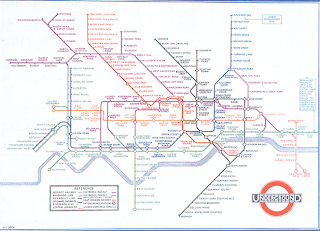Lecture notes from the Modernity and Modernism Lecture - 5/10/11
Modernity
industrialisation, urbanisation, the city
Modern artists response to the city
psychology and subjective experience
modern art and psychology
defining industrialism in art
John Ruskin - critic
--> Hunt - The Hireling Shepherd 1852 = doesn’t reflect modernity
20th century = modern = improved/better = value judgement
new is old - essential - quality
modernity = circa 1750 --> 1960 = process of modernising the world
acceleration of modern life = industrialisation/urbanisation = masses of people flocked to the cities
lives were more controlled
life speeds up --> transport improves
electricity enables communication
“the world shrinks”
Paris = site of modernity
Paris exposition 1855 = showing the world “the city” and how new/modern it was
Eiffel tower - constructed for the exposition
Palace of Industry
London = Great Exhibition 1851
Cultural race between cities - rivalry made modernism accelerate faster
Enlightenment
starting to turn to new thinking
18th century
science - secular society
the city became an object of study for artists etc
idea of being lost in a city
relevance
painting individuals subjective experiences to the city
pace of change in the world = excited and overwhelmed
introduction of world time - Greenwich mean time
increased density of population = more chance of isolation/alienation
fashion became a way of expressing yourself in the crowd
interactions between people chance
displaying clothing to others to advertise their wealth
centre of Paris recreated in 1850s
the working class moved out and the inner city becomes strictly upper class - introduction of boulevards
psychology labs
= understanding how the change of the city affects people - world becomes more understandable
- introduction of free time at work = life becomes more rational
= modern family = disconnected
Modern artists response to the city
psychology and subjective experience
modern art and psychology
defining industrialism in art
John Ruskin - critic
--> Hunt - The Hireling Shepherd 1852 = doesn’t reflect modernity
20th century = modern = improved/better = value judgement
new is old - essential - quality
modernity = circa 1750 --> 1960 = process of modernising the world
acceleration of modern life = industrialisation/urbanisation = masses of people flocked to the cities
lives were more controlled
life speeds up --> transport improves
electricity enables communication
“the world shrinks”
Paris = site of modernity
Eiffel tower - constructed for the exposition
Palace of Industry
London = Great Exhibition 1851
Cultural race between cities - rivalry made modernism accelerate faster
Enlightenment
starting to turn to new thinking
18th century
science - secular society
the city became an object of study for artists etc
idea of being lost in a city
relevance
painting individuals subjective experiences to the city
pace of change in the world = excited and overwhelmed
introduction of world time - Greenwich mean time
increased density of population = more chance of isolation/alienation
fashion became a way of expressing yourself in the crowd
interactions between people chance
displaying clothing to others to advertise their wealth
centre of Paris recreated in 1850s
the working class moved out and the inner city becomes strictly upper class - introduction of boulevards
psychology labs
= understanding how the change of the city affects people - world becomes more understandable
- introduction of free time at work = life becomes more rational
= modern family = disconnected
techniques in art change
pointillism = directly informed by new discoveries of light/optics
modern experiences = modern techniques
paintings began to expand out of the frame - comes from invention of photography
Picasso - not painting realistically
Kaiser Panorama 1883 - mass optical viewing device = slides of paintings/photography/pornography
people are prepared to pay for looking at photographs/paintings of the world rather than going out to see it personally
“technology is becoming a sort of fetish” - technology improves the world but also changes it for the worse
Max Nordau - Degeneration 1892 = antimodernist
invention of cinema by the Lumiere brothers
impact of new technologies on peoples knowledge of the world
subjective experience - individuals in the modern world
modernism is the response to that idea of their experiences
painting experiences
invention of photography makes painting obsolete
abandoning realism for expression
Modernism In Design
emerging from the change in the world
anti-historicism = never looks backwards - always looking forward - inventing new styles
truth to materials
letting materials speak for themselves
e.g. not painting metal to look like wood
form follows function
how it works comes before the aesthetics/design
beauty of design comes from its function
function of graphic design is to communicate
no extra unneeded decoration
simple geometric forms appropriate to material
utilises new technologies
aims to be international - works worldwide
Bauhaus School of Art
modernist design
cutlery set = function first = “what does a fork need to look like?”
new way of teaching art for the modern era
function first
Bauhaus building in Dessau = functional architecture
Bauhaus typefaces created for function - sans-serifs = Futura
“not just designing a new object, but designing a new life”
minimalism
Bauhaus was closed in the Nazi era - dislike of the new forward way of thinking/designing
“Ornament is crime” - essay by Adolf Loos 1908
bad design is adding unnecessary decoration
only designing for the moment - times and styles change
good design is stripping it back to basics so the design can last
Internationalism
a language of design that could be recognised and understood on an international level - utopian thinking
e.g. London underground map - international design as it has since been copied worldwide
international style of architecture - egalitarianism
Conclusion:
Notes:














